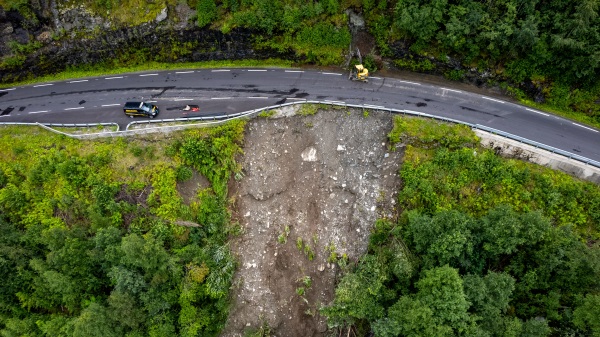New knowledge about the consequences of landslides and other events on the road network can contribute to more precise cost-benefit analyses.

In two new research projects researchers at the Institute of Transport Economics (TØI) study the scope and costs of incidents on the road network in Norway. One report studies landslides, while the other analyzes incidents that cause congestion and delays. The reports seek to value the costs of landslides and landslide measures, and the benefits of faster notification of events, for use in cost-benefit analysis.
Queuing is expensive
On a typical day, several hundred incidents are registered on the Norwegian road network. Most are insignificant for the traffic flow, while some have major consequences. Faster notification of incidents helps both to ensure that those in charge of clearing the road can reach out sooner, so the road can thus be reopened earlier – and that travelers receive information about the incident more quickly, and thus have greater opportunities to adapt.
How much an incident costs society depends on the duration of the incident, how many vehicles (and any other road users) that are affected, the consequence (time loss) per vehicle and the cost of the time loss. If the road is closed completely or there are major capacity problems, road users have few alternatives, and queues form, the consequences per vehicle are significantly major.
Large amounts of data can be used better
There is little research that combines empirical analyses of the consequences of events and cost-benefit analyses. Similarly, there are large amounts of data that can be used to quantify the consequences and costs of traffic incidents, but there are few established methods for how such data can be combined and analyzed.
TØI-researchers have used the E18 west of Oslo as a study case and analyzed individual incidents with significant consequences for traffic in addition to the total extent of delays on the E18 between Skøyen and Asker. The results show that some incidents cause major delays, but that the delays are moderate on most days. To get a broader picture, the researchers also looked at media coverage by using the media archive Retriever. These data indicate that traffic accidents and car towing in particular cause congestion.
The results give an impression of the extent of incidents on the roads and their consequences. In order to quantify the costs of all events more precisely, more method development is needed.
The study, which was commissioned by the Norwegian Public Roads Administration, confirms that there is a large scope of unforeseen incidents on the road network, and that the benefits associated with avoiding or reducing the consequences can be great for some types of incidents. There are large amounts of data related to traffic incidents that have been exploited to a fairly limited extent in the past. There may be many opportunities for further research, both related to traffic management, traffic safety and cost-benefit analyses.
Few landslides on roads cause major damage
While queues and delays as a result of traffic incidents mainly are a challenge around Oslo and other Norwegian cities, landslides and risk of landslide cause problems in other parts of the country. More than 53 000 landslides have been registered on Norwegian roads in the analysis period between 2000-2023, and most of these are relatively small with no registered damage as a result. During the period in question, landslides have caused 674 cases of damage to vehicles and account for about 1.2 per cent of the registered landslides. Of these, 62 are cases of personal injury. 13 were fatal accidents, with a total of 18 deaths and two serious injuries.
In an assignment from Nye Veier, the researchers have tried to value avalanche risk in cost-benefit analyses and thus create a better knowledge base. They have looked into two approaches especially: Expected severity of accidents if a car were to be hit by a landslide, and willingness to pay for reduced landslide frequency and reduced landslide width (on top of the accident risk and disadvantages of road closures).
With the recommended valuation of life and health for use in cost-benefit analysis, the researchers find an expected accident cost of NOK 11-21 million per personal injury case. This is a relatively high average cost per case.
The researchers suggest that the current practice of cost-benefit analyses of landslide measures should be supplemented with simple linear functions to estimate the willingness to pay per passenger journey for driving on a landslide-prone stretch. It proposes NOK 3.70 per landslide case that hits the infrastructure per year and NOK 0.13 per meter of landslide width that hits the infrastructure. Use of these updated recommendations to estimate the expected severity of personal injuries and residual willingness to pay for reduced avalanche risk will provide more precise calculations on the benefit side in cost-benefit analysis.

Text: Hanne Sparre-Enger, Head of Communications TØI






Follow us: